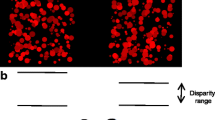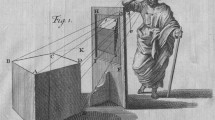Abstract.
We are surrounded by surfaces that we perceive by visual means. Understanding the basic principles behind this perceptual process is a central theme in visual psychology, psychophysics, and computational vision. In many of the computational models employed in the past, it has been assumed that a metric representation of physical space can be derived by visual means. Psychophysical experiments, as well as computational considerations, can convince us that the perception of space and shape has a much more complicated nature, and that only a distorted version of actual, physical space can be computed. This paper develops a computational geometric model that explains why such distortion might take place. The basic idea is that, both in stereo and motion, we perceive the world from multiple views. Given the rigid transformation between the views and the properties of the image correspondence, the depth of the scene can be obtained. Even a slight error in the rigid transformation parameters causes distortion of the computed depth of the scene. The unified framework introduced here describes this distortion in computational terms. We characterize the space of distortions by its level sets, that is, we characterize the systematic distortion via a family of iso-distortion surfaces which describes the locus over which depths are distorted by some multiplicative factor. Given that humans' estimation of egomotion or estimation of the extrinsic parameters of the stereo apparatus is likely to be imprecise, the framework is used to explain a number of psychophysical experiments on the perception of depth from motion or stereo.
Similar content being viewed by others
Author information
Authors and Affiliations
Additional information
Received: 9 January 1997 / Accepted in revised form: 8 July 1997
Rights and permissions
About this article
Cite this article
Fermüller, C., Cheong, L. & Aloimonos, Y. Visual space distortion. Biol Cybern 77, 323–337 (1997). https://doi.org/10.1007/s004220050393
Issue Date:
DOI: https://doi.org/10.1007/s004220050393




